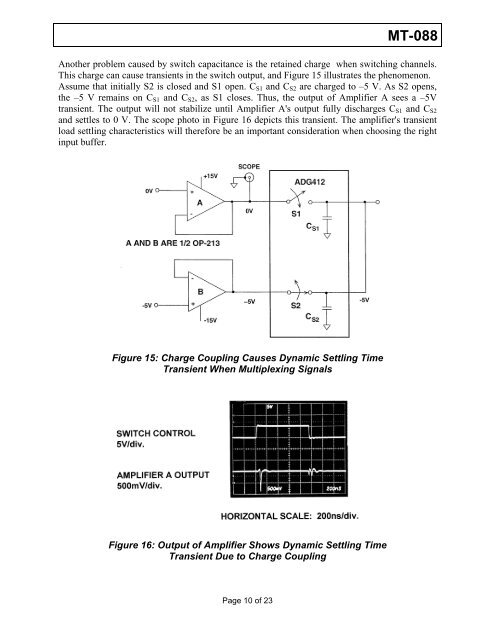MT-088: Analog Switches and Multiplexers Basics
MT-088: Analog Switches and Multiplexers Basics
MT-088: Analog Switches and Multiplexers Basics
You also want an ePaper? Increase the reach of your titles
YUMPU automatically turns print PDFs into web optimized ePapers that Google loves.
<strong>MT</strong>-<strong>088</strong><br />
Another problem caused by switch capacitance is the retained charge when switching channels.<br />
This charge can cause transients in the switch output, <strong>and</strong> Figure 15 illustrates the phenomenon.<br />
Assume that initially S2 is closed <strong>and</strong> S1 open. C S1 <strong>and</strong> C S2 are charged to –5 V. As S2 opens,<br />
the –5 V remains on C S1 <strong>and</strong> C S2 , as S1 closes. Thus, the output of Amplifier A sees a –5V<br />
transient. The output will not stabilize until Amplifier A's output fully discharges C S1 <strong>and</strong> C S2<br />
<strong>and</strong> settles to 0 V. The scope photo in Figure 16 depicts this transient. The amplifier's transient<br />
load settling characteristics will therefore be an important consideration when choosing the right<br />
input buffer.<br />
–5V<br />
Figure 15: Charge Coupling Causes Dynamic Settling Time<br />
Transient When Multiplexing Signals<br />
Figure 16: Output of Amplifier Shows Dynamic Settling Time<br />
Transient Due to Charge Coupling<br />
Page 10 of 23
















